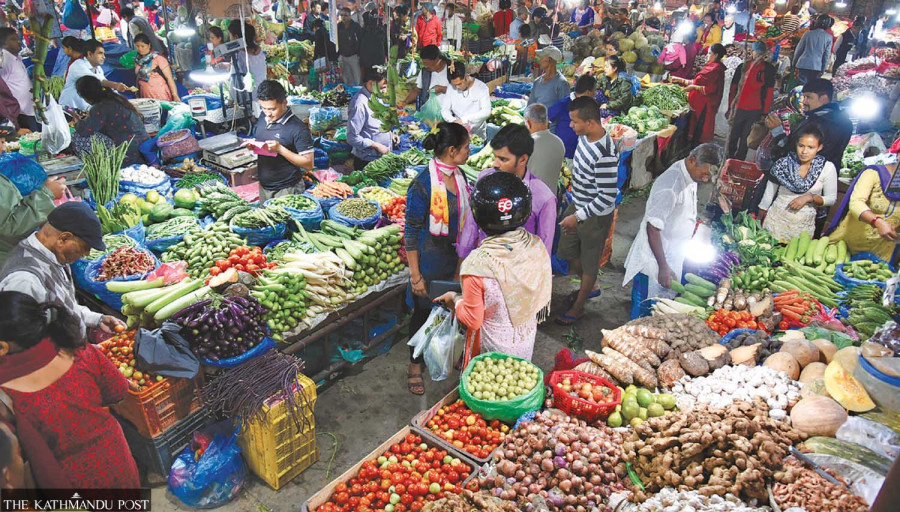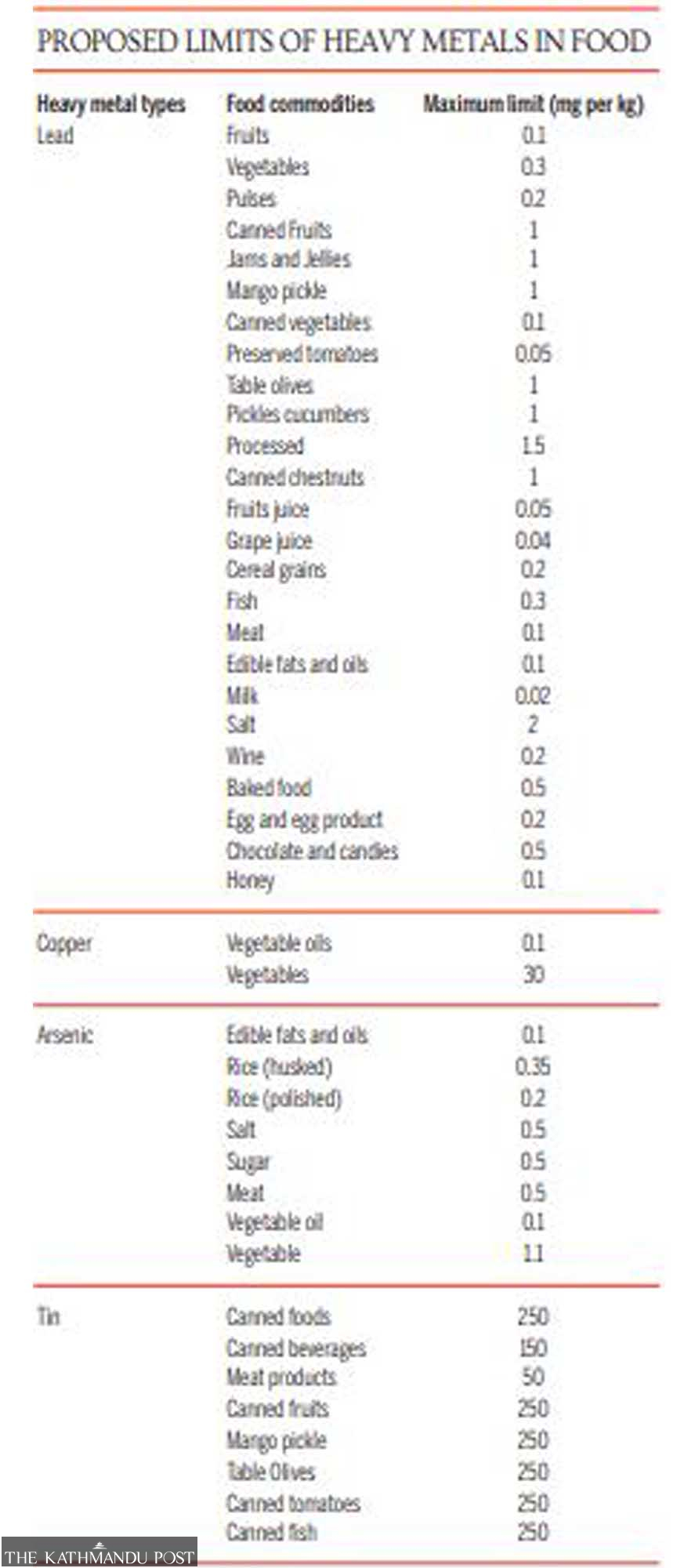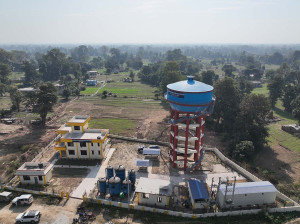Money
New maximum levels for heavy metals in food products fixed
Nepal will implement the standards after they have been approved by the World Trade Organisation, officials say.
Krishana Prasain
The government has set new maximum permissible levels for heavy metals in a range of food products to protect public health.
Lead is a cumulative toxicant that affects multiple body systems and is particularly harmful to young children.
The government has accepted a proposed reduction in the safe limit on nine types of heavy metals—lead, copper, arsenic, tin, cadmium, mercury, methyl, chromium and nickel—on food items.
The government has also set new quality standards for cereal-based complementary foods for infants and young children.
According to the World Health Organisation, children under six years are at high risk of suffering lifelong neurological, cognitive and physical damage, and even death from lead poisoning.
Acute lead poisoning can lead to multiple organ dysfunction mainly kidney, liver, heart, lungs, and most importantly, the brain. Chronic exposure, which is common, can be equally harmful, as neurological effects of childhood are irreversible and lifelong.
Exposure to lead can also affect the baby in a pregnant mother’s womb.
The Institute for Health Metrics and Evaluation estimated that in 2019, lead exposure accounted for 900,000 deaths and 21.7 million years of healthy life lost worldwide due to long-term effects on health. The highest burden was in low- and middle-income countries.
Lead is a naturally occurring toxic metal found in the earth’s crust. Its widespread use has resulted in extensive environmental contamination, human exposure and significant public health problems in many parts of the world.
Important sources of environmental contamination include mining, smelting, manufacturing and recycling activities, and, in some countries, the continued use of leaded paint and leaded aviation fuel. More than three quarters of global lead consumption is for the manufacture of lead-acid batteries for motor vehicles.
Lead is, however, also used in many other products, for example pigments, paints, solder, stained glass, lead crystal glassware, ammunition, ceramic glazes, jewellery, toys and some cosmetics and traditional medicines.

Drinking water delivered through pipes joined with lead solder may contain lead. Much of the lead in global commerce is now obtained from recycling.
"Nepal’s new maximum levels for lead in a range of food products have been notified to the World Trade Organisation through the Ministry of Agriculture and Livestock Development in mid-July," said Mohan Krishna Maharjan, senior food research officer on Sanitary and Phytosanitary Measures (SPS) National Enquiry Point under the Department of Food Technology and Quality Control.
“Once the World Trade Organisation approves the standards, the department will implement them by publishing them in the Nepal Gazette.”
If food items are found to contain more lead than the maximum limit, they are considered to be adulterated.
“The government will take action against the producers of these kinds of foods,” Maharjan said. "The department conducts market inspections and collects samples to check whether the food products meet the standards."
Dr Atul Upadhyay, a nutritionist, says children and pregnant women are at high risk of lead exposure.
"The government should conduct an analysis of food items that are mostly consumed by the target groups. For instance, cow milk also has chances of containing lead and cadmium as per the research done in many countries, resulting in lead poisoning in humans,” Upadhyay said.
“There is a need for inspection focusing on risk-based food safety management systems particularly on foods consumed by infants, children, pregnant women and new mothers.”
The department has a laboratory that can measure different types of heavy metals. “But there has been no effective implementation,'' Upadhyay said.
"Using petroleum products containing lead, which decomposes in vegetables and fruits, contaminates the food, and leakage of lead through plumbing work and factory-produced utensils contaminates food items and water."
The government has set the maximum limit of lead in fruits at 0.1 mg per kg and vegetables and cereal grains at 0.2 mg per kg.
The government has also updated standards for cereal-based complementary foods for infants and young children from six months to three years. The moisture content in baby food should not exceed 8 percent, fat content should not exceed 13 percent and protein content should not be less than 15 percent.
Complementary foods should contain carbohydrate at a maximum of 56 percent, crude fibre 3.0 percent, calcium content of 300 to 600 mg per 100 gram and iron 5.8 percent to 11.6 percent mg per 100 gram.
Likewise, it should contain vitamin B1 at 0.25 to 0.5 mg per 100 gram, vitamin A at 200 to 720 microgram per 100 gram, vitamin D at 4 to 12 percent microgram per 100 gram.
Baby food based on energy density should contain a minimum of 4-kilocalories per gram in dry weight, and sodium quantity should not exceed 300 mg in 100 gram, according to the new standards.
The food additives and contaminants, toxins and residues limit on baby food should be fixed by the government.

On heavy metals, the lead content should not be more than 0.2 mg per kg, arsenic not more than 0.05 mg per kg, cadmium not more than 0.1 mg per kg, and tin not more than 5.0 mg per kg.
The bacteria count in baby food should not be more than 10,000 colony-forming units per gram.
Cereal-based infant food should have production, processing, packaging, handling, storage and supply purity, according to the work procedure determined by the Ministry of Agriculture and Livestock Development.
Baby food products should be labelled along with messages about other nutritious food like grains, lentils, fruits, vegetables, eggs, fish and meat, among others, including breastfeeding as per the infant's age, according to the new standards proposed by the government.
The package also needs to provide information on whether the goods are a source of nutrition or not, the new documents say.
The producers need to clearly mention the nutrition elements and nutrition facts on the label, and the information can be conveyed through a bar code or other appropriate method.
“Canned food also contains lead, which is banned by many countries, but there is no such restriction in Nepal,” Upadhyay said. “In Nepal, women expecting a baby are at high risk of lead poisoning.”




 17.12°C Kathmandu
17.12°C Kathmandu















